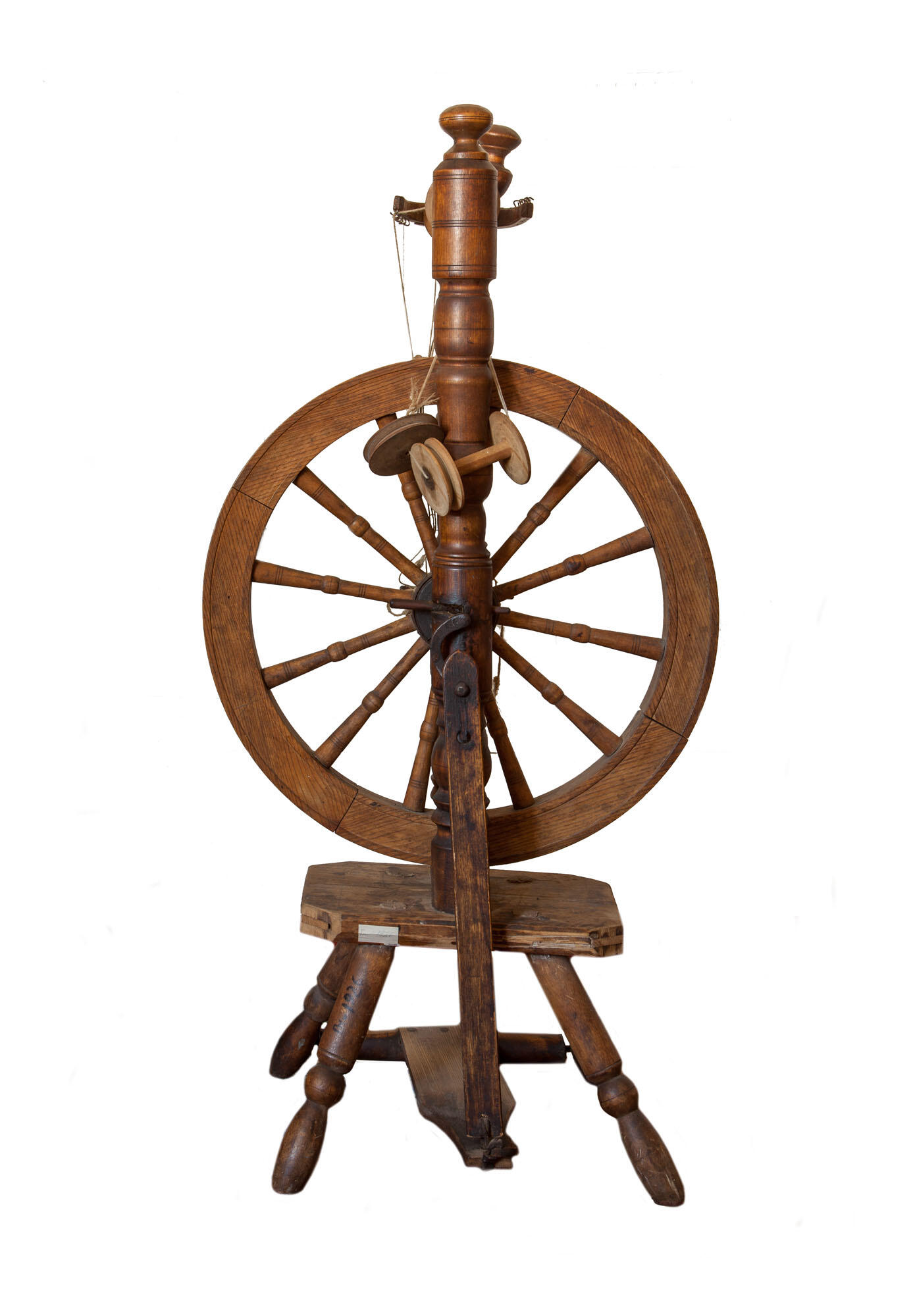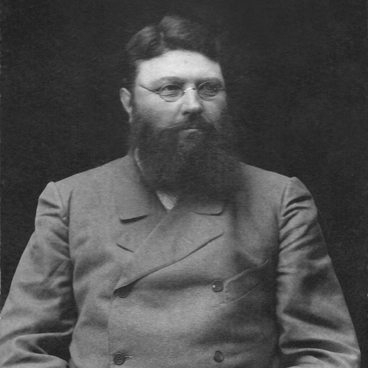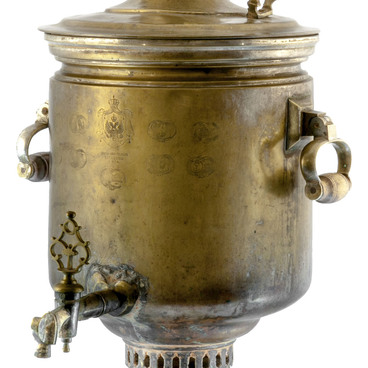The spinning wheels came to us from the ancient times. It was primordial female work – to spin yarn.
A spinning wheel is a device for manual spinning of a single thread of yarn, which was used in Ancient Rus.
The spindle needed to be protected and hidden from the ‘evil spirit’. For this in Russia the special baskets were woven, so called hanapers for spindles.
In general, the process of making the thread was extremely time-consuming and slow, so the girls learned the art of spinning threads from childhood. So that this time does not seem painfully long, the spinners gathered together. In such evenings the girls could spin yarn, sing songs, talk and dream.
The yarn from the first old spinning wheels turned out to be different in quality and thickness. This depended on the breed of the sheep, in which period of the year the sheep was sheared, and on many other factors. How was the whole spinning process carried out? With their right hand the spinner set in motion a large wheel, and with the left hand pulled a strand and brought it to the spindle. Depending on the angle of inclination of the strand to the spindle, the strand was twisted or wound.
Over time the need for products of downy fibre increased and the cord wheels came to the aid of spinners. The first cord wheels in Russia appeared in the 15th century. For several centuries the cord wheels have undergone many improvements, they widely used in our lives and are the indispensable helpers for our craftswomen.
A spinning wheel is a device for manual spinning of a single thread of yarn, which was used in Ancient Rus.
The spindle needed to be protected and hidden from the ‘evil spirit’. For this in Russia the special baskets were woven, so called hanapers for spindles.
In general, the process of making the thread was extremely time-consuming and slow, so the girls learned the art of spinning threads from childhood. So that this time does not seem painfully long, the spinners gathered together. In such evenings the girls could spin yarn, sing songs, talk and dream.
The yarn from the first old spinning wheels turned out to be different in quality and thickness. This depended on the breed of the sheep, in which period of the year the sheep was sheared, and on many other factors. How was the whole spinning process carried out? With their right hand the spinner set in motion a large wheel, and with the left hand pulled a strand and brought it to the spindle. Depending on the angle of inclination of the strand to the spindle, the strand was twisted or wound.
Over time the need for products of downy fibre increased and the cord wheels came to the aid of spinners. The first cord wheels in Russia appeared in the 15th century. For several centuries the cord wheels have undergone many improvements, they widely used in our lives and are the indispensable helpers for our craftswomen.



